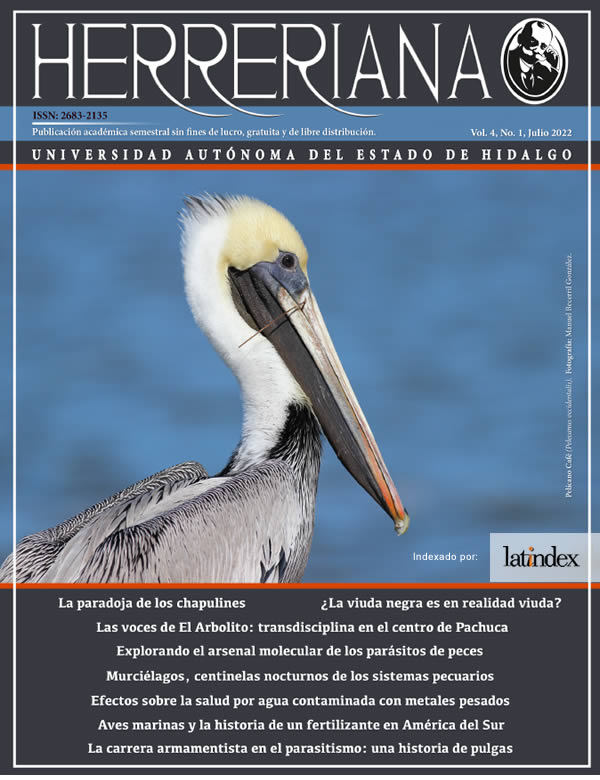The black widow: Is she really a widow?
Abstract
The black widow spider owes its name to the fact that the females of some species of Latrodectus have been seen to prey on the male before, during or after copulation; however, it is not always the case. This paper presents information compiled from previous research showing that in the genus Latrodectus, the frequency with which females cannibalize males varies between species and between individuals of a species, and depends on the ecological context.
Downloads
References
Cabrera-Espinosa, L. A. y Valdez-Mondragón, A. 2020. El género de arañas “viudas negras” Latrodectus (Araneae: Theridiidae) en México, ¿qué se conoce ahora sobre su distribución? Boletín de la AMXSA, 3: 15-21.
Foelix R. F. 2011. Biology of spiders. Oxford University Press, Nueva York, 419 pp.
Newman, J. A. y Elgar, M. A. 1991. Sexual cannibalism in orb-weaving spiders: an economic model. The American Naturalist, 138: 1372-1395.
Polis, G. A. 1981. The evolution and dynamics of intraspecific predation. Annual Review of Ecology and Systematics, 12(1): 225-251.
Waner, S., Motro, U., Lubin, Y. y Harari, A. R. 2018. Male mate choice in a sexually cannibalistic widow spider. Animal Behaviour, 137: 189-196.
Wilder, S. M., Rypstra, A. L. y Elgar, M. A. 2009. The importance of ecological and phylogenetic conditions for the occurrence and frequency of sexual cannibalism. Annual Review of Ecology, Evolution, and Systematics, 40: 21-39.
World Spider Catalog. 2022. Catálogo mundial de la araña. Museo de Historia Natural de Berna. Versión 23.0. Recuperado de: https://wsc.nmbe.ch/, consultado el (06/04/2022).
Zuk, M. 2016. Mates with benefits: when and how sexual cannibalism is adaptive. Current Biology, 26: 1226-1245.










